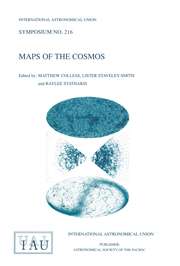No CrossRef data available.
Article contents
The Interstellar Medium in the Magellanic Bridge
Published online by Cambridge University Press: 25 May 2016
Abstract
HST ultra-violet and ground-based optical spectroscopy are presented for DI 1388, an early-type star in the Magellanic Bridge. These data have been supplemented with H I radio mapping of its environment. The spectroscopy shows interstellar components at LSR velocities of 0, 90 and 200 km s−1 – corresponding to the local ISM, a high velocity cloud and the Magellanic Bridge ISM, respectively. The last is the first absorption line detection of this material and shows the presence of both low (e.g., N I) and high (Si IV) ionization material. Further optical and HST UV observations of DI 1338 and another Bridge star, DGIK 975, are scheduled to investigate the chemical homogeneity and star formation history of the Bridge.
Information
- Type
- Part 7. Tidal Interactions
- Information
- Symposium - International Astronomical Union , Volume 190: New Views of the Magellanic Clouds , 1999 , pp. 501 - 502
- Copyright
- Copyright © Astronomical Society of the Pacific 1999

